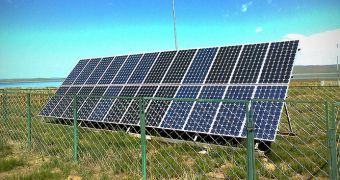A team of investigators believes using a series of technologies developed for space exploration could help companies that construct large-scale solar power plants keep their panels clean.
If dusting your carpet or curtains seems difficult, image how hard the task of cleaning up 50-football-field-worth of solar panel would be.
With this in mind, developing solar panels seems like the correct thing to do. Luckily, experts have a starting point, which means that they don't have to start from scratch, ScienceDaily reports.
“We think our self-cleaning panels used in areas of high dust and particulate pollutant concentrations will highly benefit the systems' solar energy output," explains Malay K. Mazumder, PhD, who was the leader of the new study.
“Our technology can be used in both small- and large-scale photovoltaic systems. To our knowledge, this is the only technology for automatic dust cleaning that doesn't require water or mechanical movement,” the expert adds.
The innovation was presented yesterday, August 22, at the 240th National Meeting of the American Chemical Society (ACS). The convention was held in Boston.
The researcher team Mazumder leads says that the self-cleaning technology would allow companies to scale up solar panel production and power plant sizes, while at the same time increasing overall output and efficiency.
“A dust layer of one-seventh of an ounce per square yard decreases solar power conversion by 40 percent,” Mazumder says of the challenges facing the renewable energy industry.
“In Arizona, dust is deposited each month at about 4 times that amount. Deposition rates are even higher in the Middle East, Australia, and India,” adds the expert, who is based at the Boston University.
The group previously worked under a contract with NASA, on developing self-cleaning solar panels for use on future rover missions the American space agency would deploy on the Red Planet.
“Mars of course is a dusty and dry environment, and solar panels powering rovers and future manned and robotic missions must not succumb to dust deposition. But neither should the solar panels here on Earth,” the team leader says.
The solar energy industry is currently registering a significant rise, but analysts say that low efficiency and high maintenance costs are preventing its widespread use.
Between 2003 and 2008, the industry grew by 50 percent, and additional 25 percent increases are expected to take place annually from now on.

 14 DAY TRIAL //
14 DAY TRIAL //